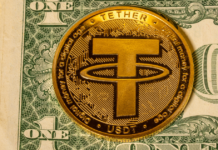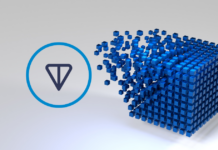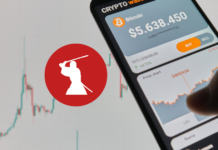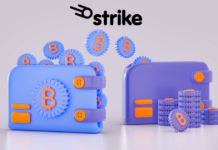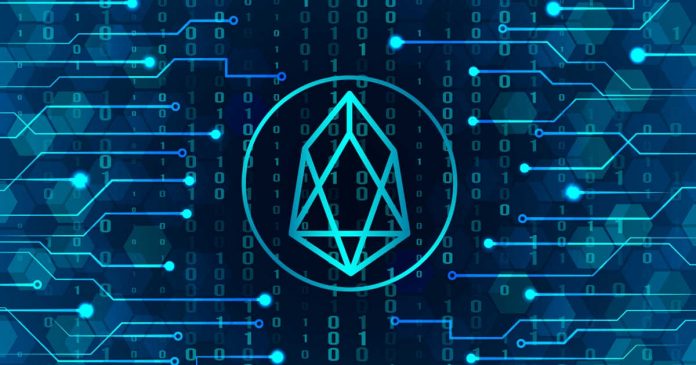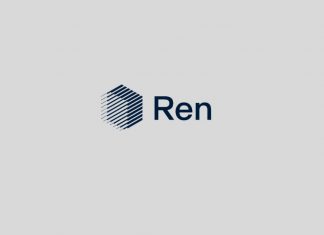The dapp platform for web 3.0, EOS is adding the Ethereum Virtual Machine (EVM) to the network. As a result, developers will be able to create and deploy additional blockchain apps to the network using familiar tools and coding language.
This week the EOS Network Foundation, or ENF, announced that they are ready to introduce the Ethereum Virtual Machine to the EOS network. Trust EVM, the new virtual machine, will function as a smart contract platform on the EOS blockchain.
🪙 Welcome to TrustEVM‼️
🌿#TrustEVM is an Eth Virtual Machine based on the EOS network, offering a turn-key solution for developers to operate their apps on an full #Ethereum-compatible chain while enjoying the high throughput, scalability, security and reliability from EOS. pic.twitter.com/LssUVv3mHR
— Trust – EOS EVM (@TrustEvm) April 19, 2022
With 0.5 second block times and 10,000+ TPS, it is significantly faster than other EVMs. Furthermore, the EVM runtime maintains complete compatibility with the rest of the EOS dApp ecosystem. You can move tokens across environments with confidence.
EOS, with its fast block times and low latency, has the potential to change the entire EVM DApp ecosystem. Furthermore, micro-transaction-based GameFi apps built with Solidity will benefit due to their extremely high throughput, which allows micro-cent gas fees. Furthermore, because DeFi apps benefit from ultra-low latency, there will be high-frequency trading applications for standard EVM smart contracts.
The launch of the EVM is part of a “new revitalization plan” for the network, with the goal of attracting Ethereum developers. As of now, Trust EVM is accessible as a developer preview testnet. The EVM runtime environment is fully compatible with the rest of the EOS dapp ecosystem. It allows tokens to transfer between the environments.
Yves La Rose, Executive Director of the ENF, stated:
“When combining the speed, throughput, and cost of EOS for Solidity-based apps running on the EOS EVM, our first product, the Trust EVM, will usher in the next generation of DeFi and GameFi with endless possibilities. Trust EVM will transform the DeFi environment as it currently exists.”
ENF replace Block.one
Although Block.one founded EOS, the EOS Network Foundation (ENF) has effectively taken over as the platform’s leader. Due to a lack of community and financial support, the ENF accuses the company of failing to attract a “critical mass.”
As a result, the platform failed to attract developers, missing out on the DeFi and NFT crazes. Despite this, EOS is still the most scalable and performant blockchain in use today. The previous developer tooling issues are solved by integrating the EVM. It provides instant access to open-source code libraries, SDKs, and popular toolkits like Hardhat and Truffle, paving the way for rapid adoption.
EOS was quite popular in terms of pricing during the May 2021 crypto boom. It has now fallen by 88 percent from its all-time high and has yet to recover.
La Rose stated: “The ENF has been using a multi-pronged strategic methodology to create EOS into the best-in-class Web3 smart contract platform and blockchain ecosystem since essentially sacking Block.one and taking over the EOSIO project.”
Here are some ENF achievements after they replace Block.io:
- publishing four research papers presenting 75 Enhancement Proposals
- protocol development coalition is formed with $8 million in financing for its first year
- tripled their staff size since the beginning of this year
About EOS Network
The EOS Network is a third-generation blockchain network powered by:
- the VM
- low-latency
- high-performance
- and extensible WebAssembly engine
WebAssembly engine is used for deterministic execution of near-feeless transactions. It should provide the best web3 user and developer experiences. EOS is the EOSIO protocol’s main blockchain and financial center. It drives multi-chain collaboration and public goods funding for tools and infrastructure through the Network Foundation (ENF).
Finally, find the most undervalued gems, up-to-date research, and NFT buys with Altcoin Buzz Access.
Above all, for more cryptocurrency news, check out the Altcoin Buzz YouTube channel.


